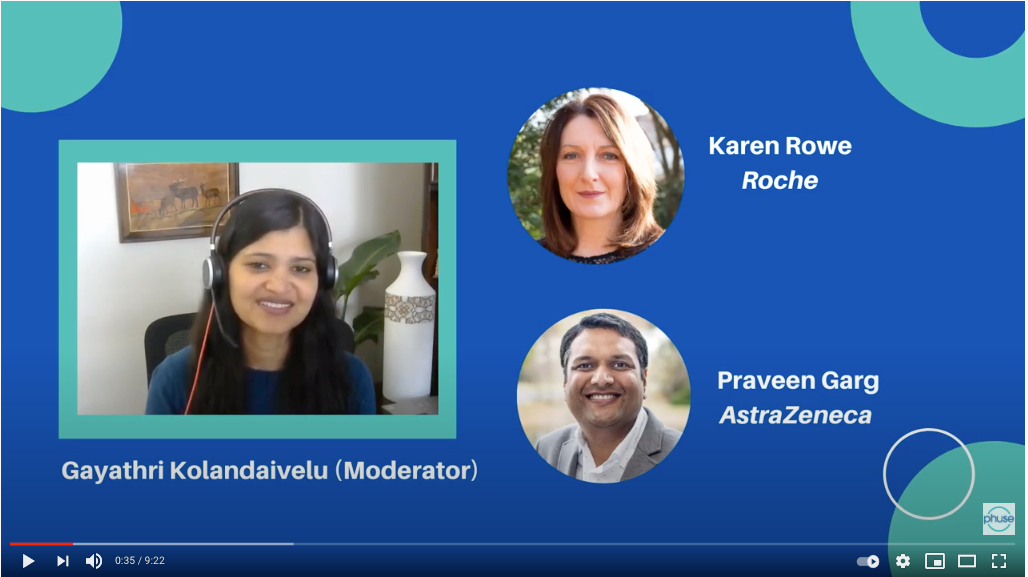A strategic mindset is one of the six important skills a head of a statistical programming function needs to possess. But what does it mean to have a strategic mindset and how can you acquire that?
Karen Rowe (Roche) and Praveen Garg (AstraZeneca) try to answer these two questions in our current podcast. Watch the first episode of the PHUSE series “The Undeniable Truth About 6 Skills Statistical Programming Heads Have that No One is Telling You” and benefit from the great expertise of two industry thought leaders.


When talking about strategy and a strategic mindset, we often mean trying to think about the big picture of what we are doing. For statistical programming, that means understanding how statistical programmers fit into the overall drug development. What is the focus of statistical programmers and how does a programmer add value in this process?
Long ago, statistical programming was purely the execution of specifications to program tables, listings and figures of clinical trial data. Specifications were provided by statisticians, and the statistical programmer was the expert to translate these specifications into SAS® code. Over time, the availability of analysis datasets following a one-proc-away philosophy increased significantly, which further evolved accountabilities of statistical programming functions. The advent of CDISC data standards, and with this the requirement to provide regulatory-compliant SDTM and ADaM, led to the accountabilities which most statistical programmers in our industry drive today. This development took 20 to 30 years but is currently undergoing a massive change. As we learn from Karen and Praveen, statistical programming heads require a strategic mindset to lead their group successfully through this time of digital transformation.
In recent years, we have seen an acceleration of technology and new digital data sources utilised in clinical trials. Statistical programmers must adapt to these current needs and to leave the “pure execution specification” mindset behind. Today’s digital landscape requires agility in our approach to stay successful. Here, it helps to take a step back and to look at the big picture.
Putting the patient at the centre of everything we do helps to make sustainable decisions in organisational processes, accountabilities and collaboration. Which new insights into patient health do we benefit from through the usage of wearables and devices in clinical trials and how can these new technologies be utilised in a compliant manner? How do we want to analyse the huge amount of data streaming through our clinical information environments? How can we provide the data to teams to take action? These questions are important for a statistical programming head to answer. A thorough understanding of how your partners in clinical teams think and what your stakeholders need is critical. Answers to these questions are key to developing people in the right direction.

So, are you asking the right questions? Do you ask yourself what your work will look like in a couple of years, with today’s disruptive technological changes? While a strategic mindset is one key skill for a head of a statistical programming function, it should not stop there. Strategic thinking can and actually must happen at every level of an organisation.
If you want to dive deeper into ways of improving strategic thinking skills, Nina A. Bowman wrote an excellent article for the Harvard Business Review. Our PHUSE Education team is currently busy researching and consolidating more material to help our community to fully explore these important job skills.
